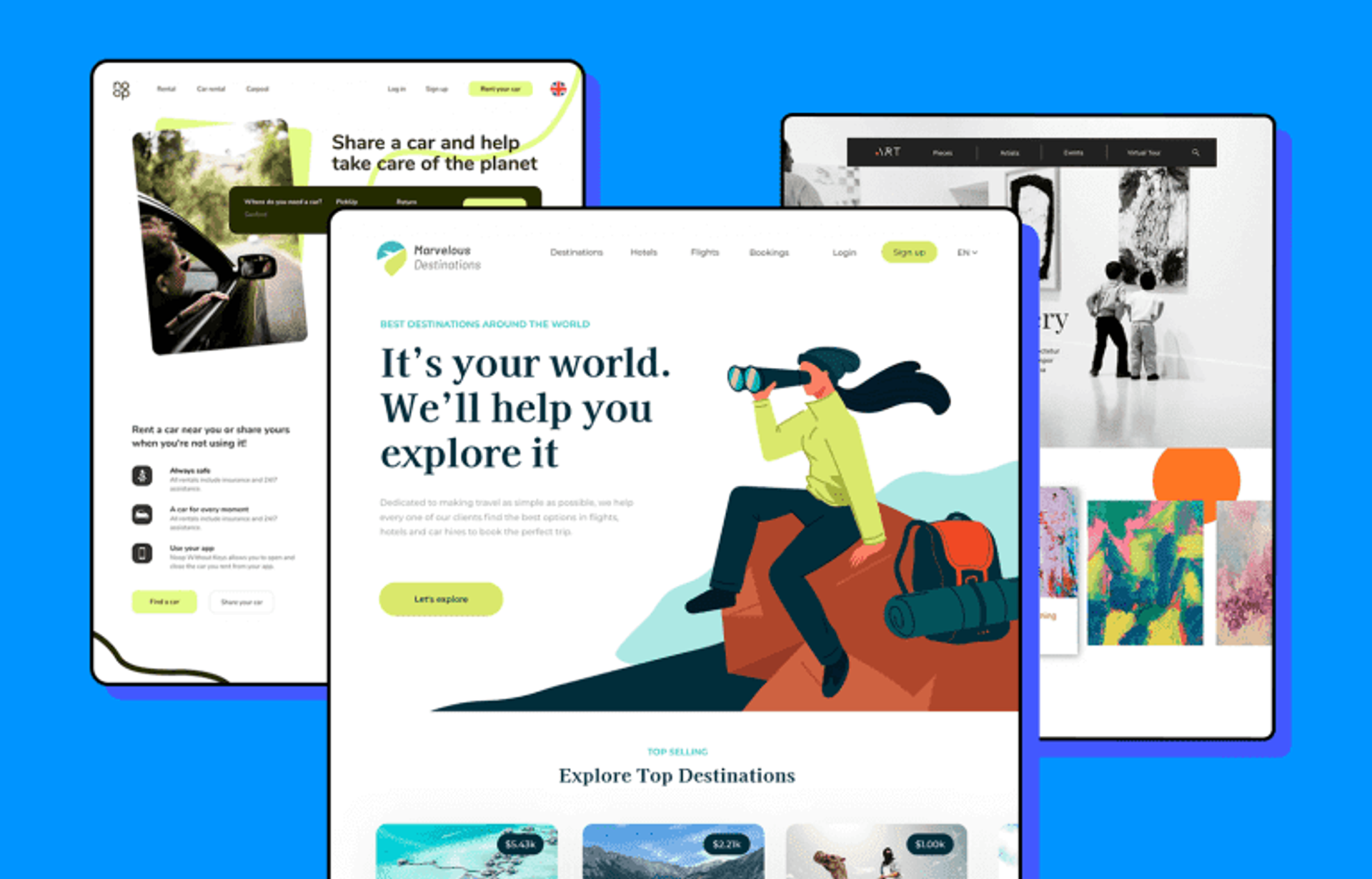SEO Marketing Las Vegas Offering Comprehensive and Targeted Campaigns
SEO Marketing Las Vegas Offering Comprehensive and Targeted Campaigns
Blog Article
Innovative Internet Style Solutions for Modern and Engaging Internet Sites
In the realm of web design, the pursuit of modern and engaging solutions has become progressively vital for services aiming to catch user attention. By integrating bold color schemes, interactive components, and receptive formats, developers can produce experiences that not only reverberate with customers yet likewise improve brand identity.
Welcoming Bold Color Schemes
In website design, the critical usage of strong color pattern can significantly boost customer interaction and brand identification. By utilizing dynamic shades, designers can develop aesthetically striking sites that capture focus and promote a memorable experience. An appropriate color palette not just reflects a firm's values but additionally evokes specific feelings that can influence customer behavior.
Vibrant shades can be used to assist users' focus to crucial elements such as phone calls to action, improving conversion rates. Utilizing contrasting shades for buttons and links can make these components stand out, prompting customers to interact even more conveniently. A cohesive shade system throughout the site enhances brand name recognition, producing a feeling of knowledge and trust among site visitors.
Nonetheless, it is crucial to stabilize strong shades with adequate white area to prevent frustrating customers. Effective use typography likewise matches strong shades, ensuring readability while preserving visual allure. Ultimately, embracing strong color design in website design not only raises aesthetic high quality however additionally plays an indispensable role in achieving strategic company goals, making it a vital consideration for modern-day internet advancement.

Using Interactive Elements
Interactive aspects are vital in modern internet style, as they significantly boost user involvement and create an extra dynamic surfing experience. By integrating attributes such as animations, float results, and clickable aspects, sites can encourage individuals to explore web content better and return for future check outs.

Micro-interactions, such as subtle computer animations when a switch is clicked or a type is submitted, can also enhance the user experience by giving prompt comments. These little information can make the site feel even more receptive and to life, fostering a feeling of link between users and the website.
Furthermore, gamification components, such as rewards for finishing particular activities, can inspire customers to engage with the web content much more deeply. By attentively integrating these interactive parts, web developers can produce a memorable and appealing online experience that resonates with customers and encourages them to return.
Applying Responsive Design
Applying responsive style is crucial in today's multi-device landscape, making sure that sites give an optimal viewing experience throughout various screen dimensions. As customers increasingly access the web via smartphones, tablets, and desktops, a one-size-fits-all approach is no much longer practical. Responsive layout permits seamless navigation and communication, adjusting format and content to fit the gadget being utilized.
Key concepts of receptive layout include fluid grids, adaptable pictures, and media inquiries. Media inquiries help with the application of different styles based on the tool's features, such as size, elevation, or resolution, enabling designers to tailor the user experience effectively.
Moreover, receptive layout improves SEO performance, as internet search engine prefer mobile-friendly websites. By executing responsive layout, services not only improve user satisfaction and involvement however also raise their reach in an affordable digital landscape. As technology proceeds to develop, adopting receptive style has Continued actually come to be an essential practice for any kind of contemporary and engaging internet site.
Integrating Multimedia Web Content
Multimedia material plays an important duty in producing interesting and dynamic internet experiences that catch individuals' focus and improve understanding. By incorporating text, photos, audio, and video clip, sites can use a richer narrative that attract various discovering designs and preferences. This integration not just bolsters individual involvement however additionally aids in communicating intricate ideas succinctly.
Including top quality photos and infographics can separate textual material, making it more absorbable. In a similar way, video tutorials and discussions can give extensive understandings that fixed content may not totally connect. Audio aspects, such as podcasts or history songs, can also enhance the atmosphere of a website, producing an extra immersive experience.
Moreover, the tactical use multimedia can boost search engine optimization efficiency, as search engines favor diverse content types, enhancing exposure. Nevertheless, it is critical to make certain that multimedia aspects do not prevent web page lots times, as this can bring about customer frustration. By balancing multimedia integration with performance considerations, internet developers can develop aesthetically attractive and practical sites that resonate with customers, fostering a deeper link and motivating return sees.
Focusing On Individual Experience

To accomplish an optimum user experience, designers need to concentrate on several vital principles. First, responsive style is essential; sites must adjust seamlessly to various gadgets and screen sizes. This access ensures that users can engage with material no matter of their chosen platform. Secondly, clarity in layout and hierarchy is essential. Clear calls to action, readable typography, and arranged web content overview users, decreasing cognitive load.
Furthermore, integrating user responses right into the style process is blog invaluable. Normal screening with real users aids determine pain factors and areas for enhancement, permitting repetitive enhancements. Ultimately, focusing on UX not only elevates individual complete satisfaction but additionally drives interaction and conversion rates, making it an essential aspect of modern website design techniques. By placing individuals at the center of style efforts, internet sites can produce long-term, positive impacts that motivate return visits.
Final Thought
To conclude, modern web layout services that stress vibrant color plans, interactive components, receptive design, and multimedia material substantially boost user interaction and contentment. Focusing on user experience through clear designs and constant try here responses further contributes to enhanced conversion rates. By embracing these approaches, websites can effectively mesmerize visitors and reinforce brand identity, eventually causing a much more vibrant and engaging on-line presence. The combination of these style principles is vital for accomplishing contemporary website design goals.
Report this page